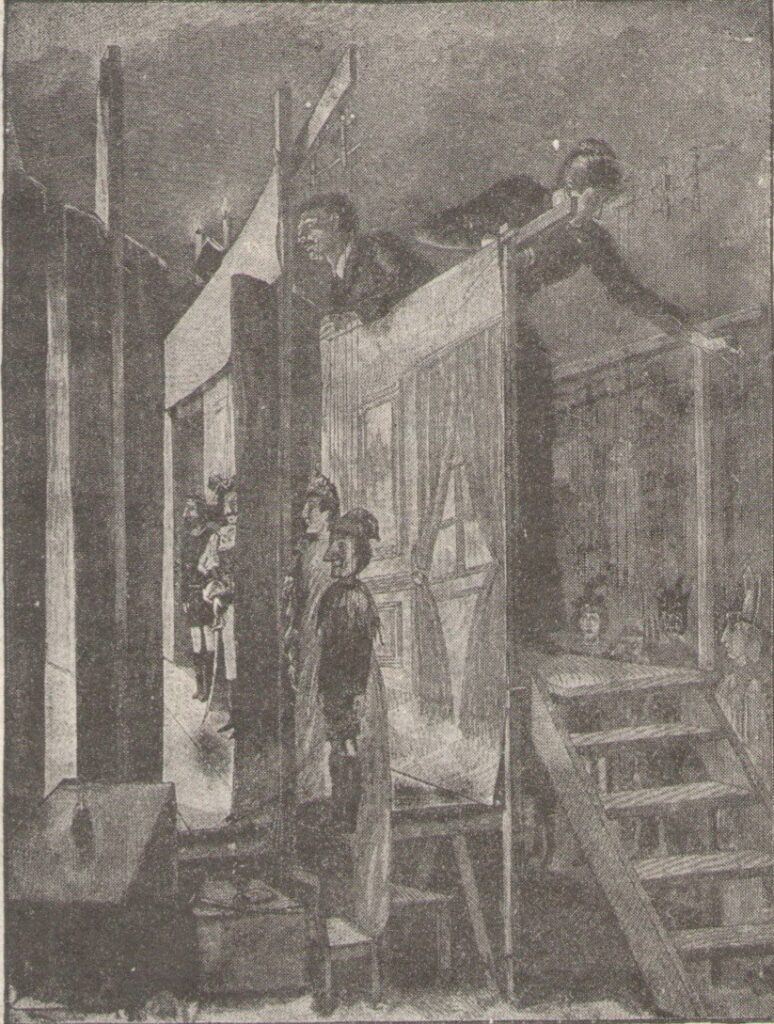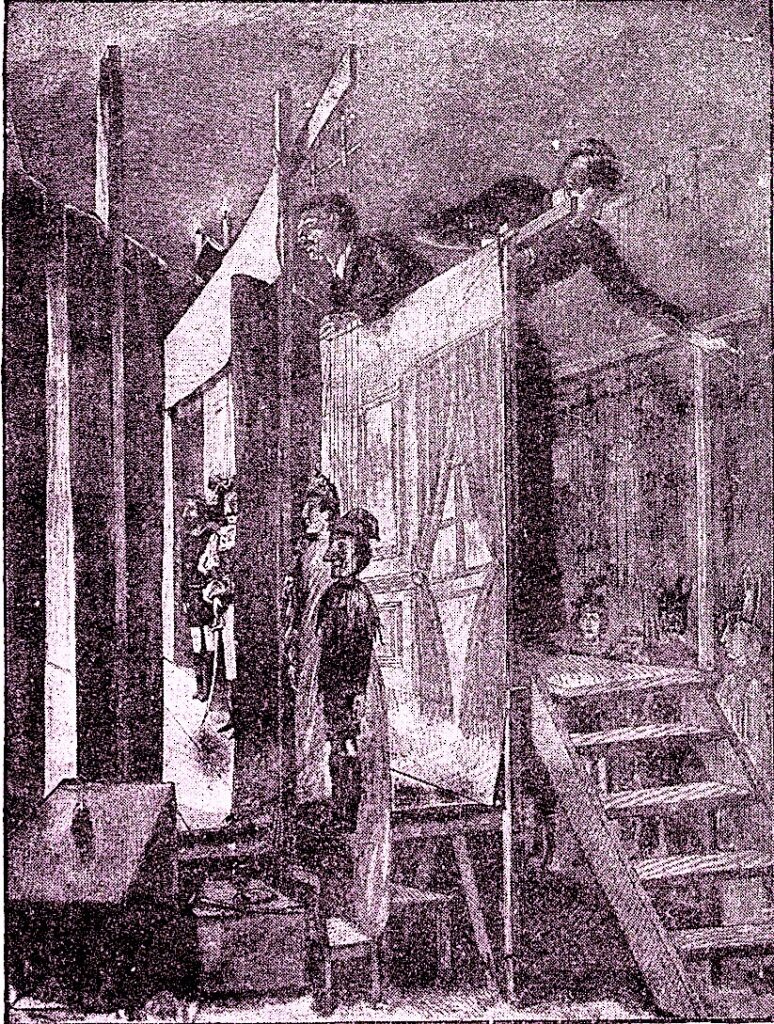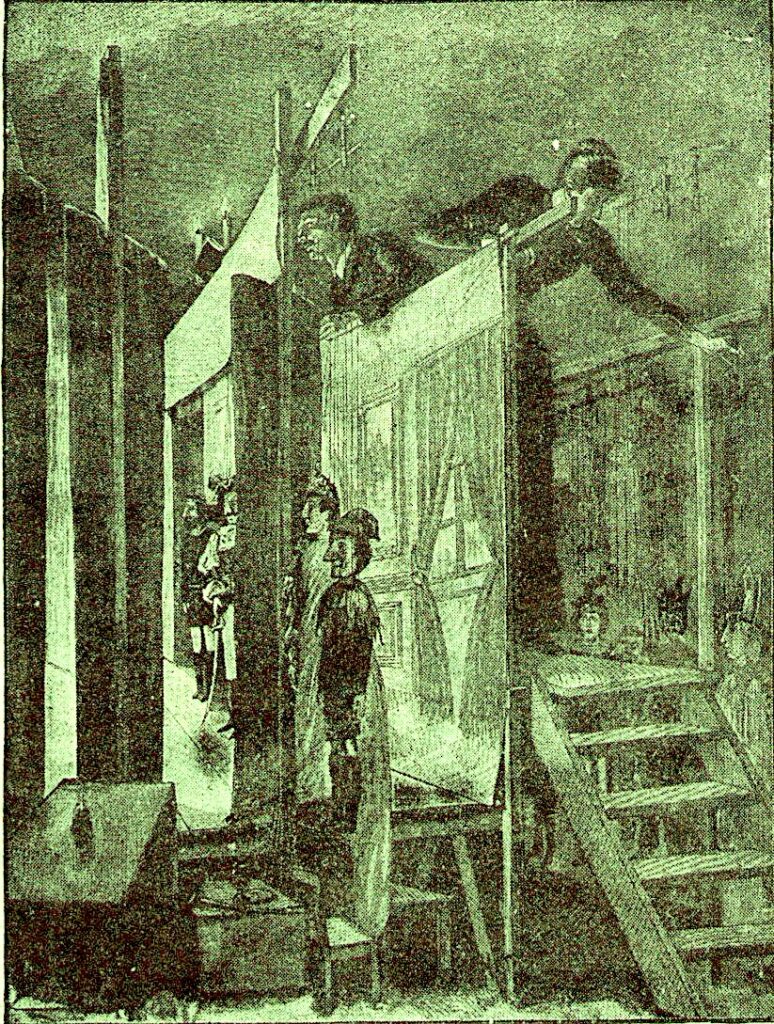Seguimos remontándonos en la historia y seguimos encontrando mujeres en el arte de los títeres. Este es el caso de Charlotte Charke quién en 1738, en Inglaterra, obtuvo licencia para crear una compañía de títeres, dirigirla e incluso manipular a Mr. Punch. Se dice de ella que fue la primer mujer en escribir su autobiografía, publicarla y que se convirtiera en un éxito. También fue autora de una novela y trabajó como actriz en numerosos espectáculos, casi siempre en papeles masculinos.
We continue to go back in history and continue to find women in the art of puppetry. This is the case of Charlotte Charke who in 1738, in England, obtained a license to create a puppet company, direct it and even manipulate Mr. Punch. It is said about her that she was the first woman to write her autobiography, publish it and have it become a success. She was also the author of a novel and worked as an actress in numerous shows, almost always in male roles.
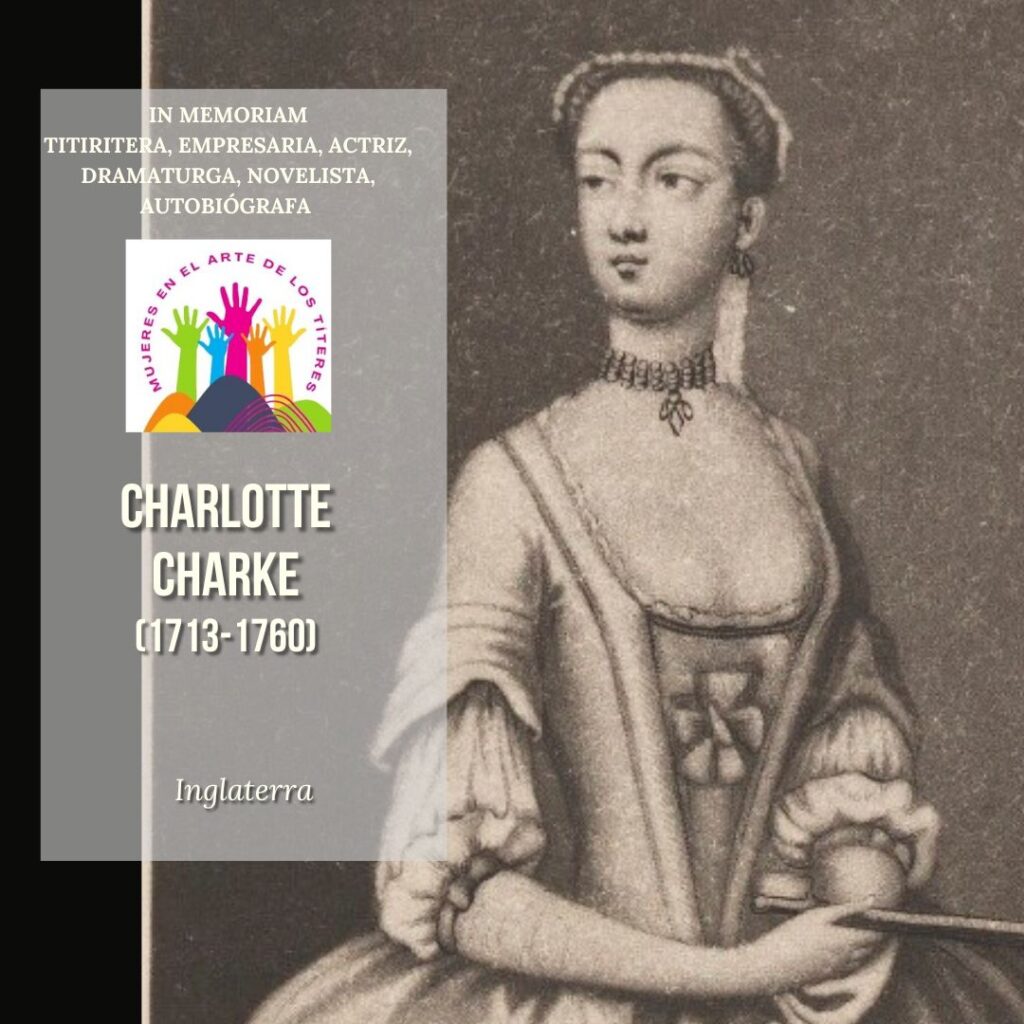
La fecha exacta de nacimiento de Charlotte es incierta (posiblemente el 13 de enero de 1712), sus padres fueron el actor, gerente y dramaturgo Colley Cibber y la actriz y cantante Katherine Shore. Charlotte, la menor de 12 hijos, la mayoría de los cuales murió en la infancia, estaba resentida como «una invitada no deseada en la familia».
En 1730, a los 17 años, hizo su primera aparición en el escenario y trabajó en el teatro Drury Lane de su padre. En el mismo año se casó con el violinista y compositor Richard Charke y dio a luz a su única hija, Catherine. Pero el matrimonio duró poco; la pareja peleó incesantemente, Richard jugó y tuvo aventuras y, para evitar la prisión por deudores, huyó a Jamaica.
Charlotte hizo su primera aparición en el escenario en un papel masculino de «calzones» (Un papel de “de calzones” o pantalón es aquel en el que una actriz aparece con ropa masculina. Los calzones, pantalones ajustados hasta la rodilla, eran la prenda masculina estándar en el momento en que se introdujeron estos roles. El término teatral travesti cubre tanto este tipo de travestismo como el de los actores masculinos que se visten como personajes femeninos. Ambos forman parte de la larga historia del travestismo en la música y la ópera y más tarde en el cine y la televisión .
https://hmong.es/wiki/Breeches_role)
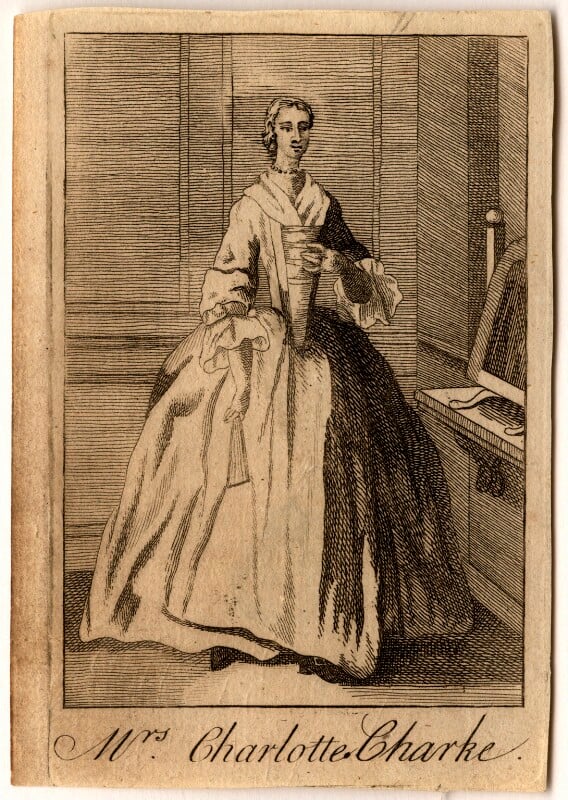
En julio de 1731 y al año siguiente interpretó a Rodrigo en Othello. Era popular en ese momento que las actrices interpretaran papeles de «parodia», vestidas como hombres en un estilo de «niño principal» de pantomima. Pero las apariciones de Charlotte, que incluyeron en 1736 al salteador de caminos Macheath en The Beggar’s Opera de John Gay, fueron más obviamente masculinas. Fue por esta época que Charlotte comenzó a usar ropa masculina en la vida cotidiana y, siendo alta y esbelta, tenía la figura tanto dentro como fuera del escenario.
Durante la década de 1730, Charlotte apareció en numerosas obras de teatro y tenía su propia compañía. Tras la muerte de su marido se encontró a los 24 años sin trabajo, madre soltera, y empezó a vestirse de hombre más o menos todo el tiempo .
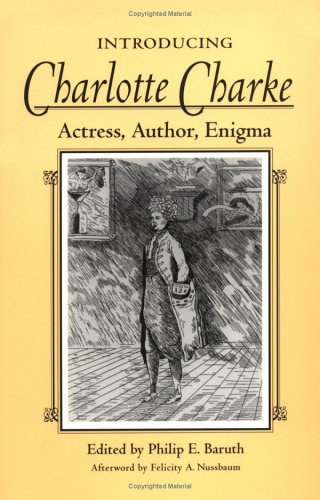
Titiritera, directora de su propia compañía
En 1738 obtuvo una licencia para dirigir un espectáculo de títeres que recorrió el país y se hizo muy popular, ya que caricaturizaba a los políticos y actores de la época. Su éxito duró poco ya que se enfermó, se vio obligada a vender el espectáculo de marionetas y encarcelada por deudas.
Luego le ofrecieron un trabajo en otro teatro de marionetas interpretando al Sr. Punch, que tuvo un breve éxito hasta que arrestaron a su empleador por deudas, fue a prisión, se volvió loco y murió.
En 1741 se unió a una compañía de teatro itinerante como «Mr Charles Brown»
Charlotte tuvo varios años de una variedad de trabajos «masculinos», incluido el de ayuda de cámara del notorio bígamo y libertino, Richard, sexto conde de Annesley (1690-1761). Posteriormente se convirtió en fabricante de salchichas, abrió su propia taberna en Drury Lane, todavía actuaba ocasionalmente y ahora vivía abiertamente como «Charles Brown». A pesar de esto, se volvió a casar en 1746 con John Sacheverell, quien murió poco después.
En su autobiografía, Charlotte dice que dos mujeres se enamoraron de ella y una, al descubrir su verdadero sexo, la atacó. Durante aproximadamente una década, vivió con otra mujer como «Sr. y Sra. Brown», además de casarse por tercera vez en 1750 con John Harman, un hombre al que aparentemente odiaba y que pronto desapareció. En su biografía de 2006, Charlotte Kathryn Shevelow dice que la relación de Charlotte con la Sra. Brown fue la «asociación más duradera de su vida». Ella sospecha que eran amantes, pero admite que «la naturaleza de su apego sigue sin especificarse». Shevelow escribe además que Charlotte era «una persona que rechazó una definición fija de su sexualidad y género, poniendo a prueba la permeabilidad de la línea cultural que supuestamente separa a las mujeres de los hombres».
En 1747, Charlotte se fue de gira por el West Country con un grupo de actores ambulantes acompañada por su hija de 17 años, Catherine (conocida como «Kitty») y la «Sra. Brown», que también era actriz. Se cree que en algún momento de 1752 vivía en Chepstow y desde junio hasta noviembre del mismo año dirigía una pastelería en Pill, un pueblo portuario cerca de Bristol.
En 1755, Charlotte publicó su biografía A Narrative of the Life of Mrs Charlotte Charke (posiblemente la primera escrita por una mujer) que se vendió bien y tuvo varias ediciones. Hablador, ingenioso e íntimo, es una mezcla de honestidad, humor y autocomplacencia. Fue publicado por tres imprentas en Londres y apareció una edición en serie en Bristol impresa por el antiguo empleador de Charlotte, Edward Ward.
La última aparición de Charlotte en el escenario en una «parte de calzones» fue en 1755 interpretando al Príncipe Volscius en The Rehearsal de George Villiers. En 1756 Charlotte escribió una novela La historia de Henry Dumont y la señorita Charlotte Evelyn en la que un hombre gay profesa su amor por otro hombre, se viste como mujer y procede a besar a su amada y luego es golpeado por su amada y sus amigos.
El padre de Charlotte, Colley Cibber, murió en 1757 y le dejó cinco libras simbólicas. Al año siguiente, su hija Kitty emigró a Estados Unidos, donde murió en Nueva York en 1773. Charlotte ahora estaba sola, su padre muerto, su hija en el extranjero y separada de su familia restante.
Murió en la pobreza en alojamientos miserables en Haymarket a los 47 años, el 6 de abril de 1760, recordada solo como informó el British Chronicle el 16 de abril:
«La célebre señora Charlotte Charke, hija del difunto Colley Cibber Esq, poeta laureado, una dama notable por sus aventuras y desgracias».
Jonathan Rowe 2021
información tomada de
Kathryn Shevelow ‘Charlotte’ http://outstoriesbristol.public.s3.eu-west-1.amazonaws.com/Charlotte%20Charke%20by%20Jonathan%20Rowe.pdf
In 1730, aged 17, she made his first appearance on stage and worked at his father’s Drury Lane theatre. In the same year she married the violinist and composer Richard Charke and gave birth to her only daughter, Catherine. But the marriage did not last long. The couple fought incessantly, Richard gambled and had affairs, and, to avoid debtor’s prison, he fled to Jamaica.
Charlotte made her first appearance on stage in a male «breeches» role. standard male role at the time these roles were introduced. The theatrical term cross-dressing covers both this type of cross-dressing and that of male actors dressing as female characters. Both are part of the long history of cross-dressing in music and opera and later in film and television.
https://hmong.es/wiki/Breeches_role)

In July 1731 and the following year he played Rodrigo in Othello. It was popular at the time for actresses to play «parody» roles, dressed as men in a pantomime «leading boy» style. But Charlotte’s appearances, which included in 1736 the highwayman Macheath in John Gay’s The Beggar’s Opera, were more obviously masculine. It was around this time that Charlotte began wearing men’s clothing in everyday life and, being tall and slender, she cut the figure both on and off stage.
During the 1730s, Charlotte appeared in numerous plays and had her own company. After the death of her husband, she found herself at 24 without a job, a single mother, and she began to dress as a man more or less all the time.

Puppeteer, director of her own company
In 1738 she obtained a license to direct a puppet show that toured the country and became very popular, as it caricatured the politicians and actors of the time. Her success was short-lived as she fell ill, was forced to sell the puppet show and imprisoned for debt.
She was then offered a job at another puppet theater playing Mr. Punch, which had brief success until her employer was arrested for debt, she went to prison, went mad and died.
In 1741 she joined a traveling theater company as «Mr Charles Brown»
Charlotte had several years of a variety of «male» jobs, including that of valet to the notorious bigamist and libertine, Richard, 6th Earl of Annesley (1690-1761). She subsequently became a sausage maker, opened her own public house in Drury Lane, still performed occasionally and now lived openly as «Charles Brown». Despite this, she remarried in 1746 to John Sacheverell, who died shortly afterwards.
In her autobiography, Charlotte says that two women fell in love with her and one, upon discovering her true sex, attacked her.For about a decade, she lived with another woman as «Mr. and Mrs. Brown,» as well as marrying for the third time in 1750 to John Harman, a man she apparently hated and who soon disappeared. In her 2006 biography of her, Charlotte Kathryn Shevelow says that Charlotte’s relationship with Mrs. Brown was the «longest partnership of her life.» She suspects they were lovers, but admits that «the nature of her attachment remains unspecified.» Shevelow further writes that Charlotte was «a person who rejected a fixed definition of her sexuality and gender, testing the permeability of the cultural line that supposedly separates women from men.»
In 1747, Charlotte went on tour in the West Country with a troupe of traveling actors accompanied by her 17-year-old daughter Catherine (known as «Kitty») and «Mrs. Brown», who was also an actress. It is believed that sometime in 1752 she lived in Chepstow and from June to November of the same year she ran a pastry shop in Pill, a port town near Bristol.
In 1755, Charlotte published her biography A Narrative of the Life of Mrs Charlotte Charke (possibly the first written by a woman) which sold well and went through several editions. Chatty, witty and intimate, he is a mix of honesty, humor and self-indulgence. It was published by three presses in London and a serial edition appeared in Bristol printed by Charlotte’s former employer, Edward Ward.
Charlotte’s last appearance on stage in a «breeches part» was in 1755 playing Prince Volscius in George Villiers’ The Rehearsal. In 1756 Charlotte wrote a novel The Story of Henry Dumont and Miss Charlotte Evelyn in which a gay man professes his love for another man, dresses as a woman and proceeds to kiss his beloved and is then beaten by his beloved and his friends.
Charlotte’s father, Colley Cibber, died in 1757 and left her a symbolic five pounds. The following year, her daughter Kitty emigrated to the United States, where she died in New York in 1773. Charlotte was now alone, her father dead, her daughter abroad and separated from the family. remaining of it.
She died in poverty in squalid accommodations in Haymarket aged 47, on 6 April 1760, remembered only as reported by the British Chronicle on 16 April:
«The celebrated Mrs. Charlotte Charke, daughter of the late Colley Cibber Esq, poet laureate, a lady notable for her adventures and misfortunes.»
Jonathan Rowe 2021
información tomada de:
Kathryn Shevelow ‘Charlotte’ http://outstoriesbristol.public.s3.eu-west-1.amazonaws.com/Charlotte%20Charke%20by%20Jonathan%20Rowe.pdf

